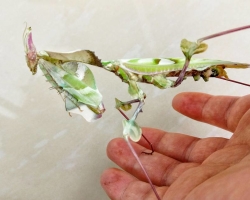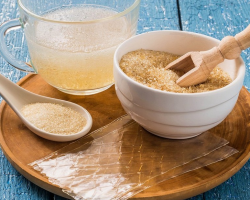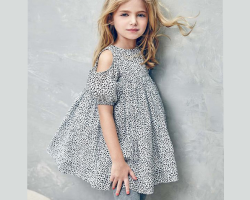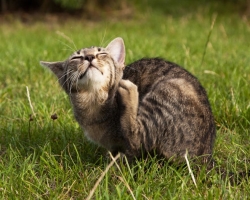Pheasants, despite all their exotic and fairly bright appearance, belong to the chicken detachment and are the largest of them. Their species are many, and each of them is somewhat different.
Content
- General characteristics of pheasants
- TOP-21 species of pheasants
- Characterization of the aviary and cells for pheasants
- How and how to feed the pheasants in captivity?
- Divorce of pheasants at home: Features of the content
- Care for pheasant chicks
- How to clean the premises for pheasants?
- What are pheasants?
- What to do so that the pheasants do not be nervous?
- Mission of pheasants in the household
- Video: Is it worth breeding pheasants at home?
How exactly the pheasants differ by species and how to create a pheasant for the appropriate conditions of care - you will learn about this below.
General characteristics of pheasants
- The most distinguishing characteristic of one or another type is the color of the plumage, and the most striking it is in males. Starting with orange and ending with red tones, crossing from back to breast. By the way, they also have a longer tail (more than half a meter, while the length of the tail of females rarely exceeds a quarter meter). Females look more modest, their plumage is usually close to a brown shade with black interspersed. But the heads and neck of birds usually have greenish or purple-blue feathers.

- The eyes of pheasants As if circled in red rings, feathers on which are absent. The feathers of males have an interesting metal tint. On average, in length, the male individual is about 80 cm, especially large-up to 90 cm. The females are much smaller, their length is from 55 to 70 cm. Accordingly, the birds vary in weight: the males sometimes reach 2 kg, and females and females. - no more than 1.4 kg.
- Concerning wings, then they are oval, relatively short. On a tail that has the shape of a wedge, there are 18 feathers tapping to the end. The legs of males are decorated with spurs that they use in the struggle for the female.
- Pheasants are quite shy, so they often hide in the bushes or in the grass, if it is high. If possible, the pheasant is hidden in the foliage of trees, where, thanks to the variegated, it becomes almost invisible. From there, in the absence of danger, he rushes down, but in flight sharply changes the trajectory, turning into a horizontal flight.
- SoundsPaved by pheasant, quite sharp, but they shout quite rarely, even when frightened. More often a noise effect is observed during the flight of pheasants, especially from a loud take -off. They fly at short distances (up to 100 m), but quickly run to long distances.
- They live in natural conditions for 6-7 years, in captivity with proper care they live up to 15 years. They nest directly on the ground, choosing places near reservoirs.
TOP-21 species of pheasants
- Ordinary.His homeland is Central Asia, the Caucasus. This type includes 32 subspecies. It looks like ordinary chicken, but has a longer tail and plumage of various colors, depending on genetics: brick-lilac, sunny, green, silver-gray shades. On the neck and head - feathers of turquoise shade, there are light strips on the wings. Unponducted in food, is able to eat weeds and small insects.

- Fazan Argus.Mostly inhabits in Southeast Asia, one of the largest species. It has brown feathers, the neck from below is painted red. On a blue head - a black crown, gray legs. If we count its wide tail, then the length of the male can reach 2 m. A feature of the color of this species, which appears to 3 years of life, is a circular pattern on the edges of secondary flower wings.

- Pheasant Japanese (or green).The color has a color corresponding to the name of the species. This is a small bird, painted in all shades of green, from the emerald head to olive wings. The head is red-border, with a small green crest, the neck is blue on top, and thin feathers of greenish-blue tones go from back to lower back and tail. The wings and back are brown, with chocolate-gold). On the Malachite back, feathers with brown stripes are perfectly located. The tail is relatively small, striped. The male reaches 90 cm in length, its tail is up to 40 cm, the female is half as much. Male weight - about 1 kg, females - about 800 g.

- Pheasant white.This type of eared pheasants in natural living conditions live only in Tibet, but gets used to captivity. Lives up to 15 years. Feet feathers on the body, tail and wings can be covered with gray feathers with a smoky tint. There is a black crown on the red head.
- Pheasant pile.Another name for this widespread pheasant is Taiwanese. Males have purple shades of feathers that are cast with gloss, and burgundy steering feathers on the tail. Such coloring and shine appear by 2 years, before that males are dark. The back is decorated with a white spot on top, and light patterns appear in the center of the tail and neck. The paws of bright raspberry color.

- Elliot Pheasant.His homeland is Eastern China. The length of the body with a tail is about 80 cm, and the tail takes more than half. The wings grow by 22-23 cm, the Elliot's pheasant weighs up to 1.3 kg. Females are much smaller - up to 50 cm, of which about 20 cm is the tail. The wings in length are the same as that of males, and the weight does not reach a kilogram.

- Pheasant Manchurian.Small sizes, has a yellow-red robe framed by gray feathers located on the tail and wings. A distinctive feature is a white “collar” around the neck. These pheasants live in small groups, while each copy has its own way of life. They adapt well to captivity conditions. Set in the spring (males) and summer (females).

- Chinese.A breed with a long tail and wings. But the body is only 35 cm. Weight - up to one and a half kilograms. Females weigh up to a kilogram, their tail is not much longer than the body of the male. They have a light crown from the nape to the neck, dark blue wings and bright orange chest and tummy. The color of the tail is transverse, silver and black stripes alternate in it. The beak of a smoky shade, the paws are dark gray.

- PHAZAN PENTER.The birthplace of this group of pheasants is Malaysia. On the tail they have 16 long feathers, which, like the back and wings, have a mesh multi -colored pattern. On the head, rarely located feathers resembling Iroquois. The stomach is black or chestnut, with dark circles. There are no spurs, the paws are quite weak. It is a meat breed.
- Wild.These types of meat and eggs of pheasants in Turkey and Korea are most common. Males reach 85 cm in length, weigh up to 2 kg. More often than other species, choose the area near the water and courageously enter the battle, protecting their territory. The marriage period is spring.
- Steppe.A distinctive feature is a long tail -shaped tail with feathers tilted down. The coloring is diverse, with a predominance of brown and golden shades. The back is orange. The weight of the female is just over one and a half kg, the hatching of offspring takes about a month.

- Decorative.One of the subspecies is the royal individual living in the northern part of China. It has yellow-brown feathers, black feathers form a rim on the neck, the crown in white feathers. In females, the body is red-brown in color, with dark spots, in males the plumage of scaly-over-overflowing. The wings have an unusually beautiful geometric pattern, but the tail is decorated with white and brown feathers on which gray stripes are located. The paws and beaks are ashen, and black blotches on white feathers of the head make it look like a mask. Reaches a length of 2 m, but a huge proportion of this parameter refers to the tail. Another subspecies - Golden, living in China and Tibet. It has a yellow-orange color, as well as a crest. The throat and goiter are connected by red feathers, from behind - triangular patterns, creating a kind of “collar”, which gave the name of the variety - collar. Together with the tail in length, it reaches almost a meter, weighs about 900 g. Depending on the shade, it is divided into pheasants of Bordeaux, Giji (yellow) and cinnamon (golden gray). Young, who have not reached the year, females give about 25 eggs, older - twice as much.
- Mirror pheasant.A rare type of silver color with pearl overflow of individual feathers, which creates a mirror effect. It gets used to captivity conditions.
- Diamond pheasant.Outwardly similar to a golden pheasant, but settles at a greater height. The back of the male is decorated with feathers of dark green color, the same color of the wings, neck, back, goiter, the eyes are also framed. It has a bright red crest. The tail is predominantly black. It grows up to one and a half meters long along with a tail reaching a meter. Females - about 70 cm (the tail takes half the length). The rim around the eyes is painted in a gray-blue color. Refers to the collar individuals.

- Hunting.A small population of these pheasants is bred by breeding a green look with ordinary. Their color is as diverse as possible, from white to purple-black. Weight reaches 2 kg.
- Silver.Reaches a length of more than half a meter, tail - takes half of this indicator. The females are half as much. The color is white with brown interspersed, on a bright red head-a black crest, below is blue-black feathers. Coral paws are decorated with spurs. The female has an olive-brown color and red cheeks. On feathers - black intersperses and strips. The weight of the male can reach 5 kg, females - half as much. Refers to widespread pheasants.

- Citric. These individuals are bred artificially, have a solar lemon color. Reaches a meter length. Augcts are lighter.

- Fazan Nepalsky.Males have a black color that casts a metallic gloss. From below, feathers have a white border, on the wings - burgundy strips. On a bright red head is a black crest, dark gray paws with spurs. Favishes and males of about the same size are 60-70 cm, from which the tail occupies a decent third. Females are brown in brown, having an olive tint.
- Tragopan.Large males have a bright color, near the eyes are cone-shaped processes, which are similar to the horns that gave the name this species. There are also growths on the throat. Females are brown, they have no oxes around the eyes and earrings on the throat.

- The pheasant is blue.It seems to be covered with a matte haze of blue feathers. The head is red, and white ear feathers rise in bundles to the crown, forming peculiar ears. The paws are pink, in the tail blue-black feathers from the bottom are shaded white. The male can reach a meter in length, while half falls on the tail. A smaller female has the same color, but it is not so bright.
- Romanian pheasant.This is one of the subspecies of ordinary pheasants, which has on the wings, and sometimes on the head with a crest, greenish (less often yellowish or blue) tide. The main color is gray-brown. Brown females of green tide have no feathers. This is a meat breed, and after the bird gains 1 kg, in industrial conditions it is clogged to obtain dietary meat. Egg production - up to 60 eggs in one season.
Characterization of the aviary and cells for pheasants
When breeding pheasants, cells or aviary are needed. Their characteristics are as follows:
- Space for one adult bird should be no less than 2 sq. m.
- The height should be from one and a half to two meters.
- The room should be equipped with artificial lighting.
- The room where individuals are contained, it is necessary to provide a place where they could have their nests, and provide them with building materials (usually this Kamysh or corn stems).
- For pheasants of meat breeds that do not need a lot of space, ordinary enclosures or cells are suitable, the main thing is that the fence is reliable and large.
- If birds relate to species tolerating cold, the room should be insulated polycarbonate.
- Put in the poultry house of the Nesyts so that the pheasants can sleep on them.
- In order to avoid dampness as a material for walls, select gazinkovka.
- Ash and sand It is suitable for the birds to have a litter, and it is advisable to cover the floor with a net so that rodents do not climb into the aviary.
- Also, ash and sand, you can fall asleep trays intended for bird rest.
- Before winter, it is necessary to additionally insulate both flooring and walls.
- It is better to cover the aviary with a soft net so that the pheasants do not have the opportunity to fly out of it.
The family will need a space of at least 10 square meters. m, and for chicks who have not reached a month - about 1 square. m for 30 heads. An additional area intended for walking should also be provided.
- If the surfaces of the aviary consist of boards, they should be treated with a lime solution that protects against the penetration of parasites. If the sandy floor itself is suitable for the pheasant in order for it to clean feathers, then with clay, you should additionally arrange the baths with sand for these purposes. Sand can also serve as a phasa toilet, the main thing is to change it as it is contaminated.
- The cell can be made independently, using old boards, an unnecessary lattice from the refrigerator and other improvised materials. Plastic bottles are suitable for feeders and drinkers, and the floor can be made scrolling like a tape to facilitate cleaning. The aviary must have a wooden or metal frame with a mesh mounted on it. It is also necessary to make a protective wall from the wind to prevent drafts.
How and how to feed the pheasants in captivity?
- The diet of pheasants In order for them to justify the costs, it should be quite rich and diverse. It must be in it corn and chalk, wheat and yeast, barley, oats, millet, seeds. It is useful to add fish flour and fish oil, as well as periodically feed birds with mineral and vitamin additives. For one meal for an adult, food should be selected at the rate of 3-5 g. When the birds begin to nest, the dose should be increased.
- The diet is complemented by compound feed, which is made for chicken, combined with animal proteins. Also pheasants to taste insects, beetles, snails. Add minced meat, cottage cheese, porridge on meat broth, vegetables (both boiled and raw), greens.

- Fazan feeders should be well fixed so that the bird could not tear or turn it over. In addition, you should constantly monitor the cleanliness of the drinkers and feeders in order to prevent possible parasitic diseases. In summer, pheasants are fed 3 times a day, in winter - 2 p.
- Pheasy chicks need more frequent nutrition, therefore, up to two weeks of age, their feeding is up to ten times a day, then the frequency gradually decreases, and after reaching 3 months of age, they are transferred to an adult feeding regimen.
- There should be constantly in drinkers cool water. In the wedding season, antibiotics (penicillin, erythromycin) are added to the normal stern, which increases the number of fertilized eggs.
Divorce of pheasants at home: Features of the content
- Pheasants multiply well in captivity. But to obtain a full offspring, a high -quality incubator will be needed, because to hatch the eggs of the female, it will be necessary to distinguish most of the aviary, which is unrealistic, especially if the female is not one.
- Therefore, it is best to collect eggs, doing this at a time when the bird eats. Having collected eggs, they are simply moved to an incubator and removed in the same way as ordinary chickens. The time of the incubation period, depending on the type, is 24-32 days. It is also possible to hatch eggs with decorative chickens or turkeys. By the way, it is noted that the phasagnians, trudged and educated by chicken, are much more calm.
- Usually pheasants in the tribal season contain either in pairs, or putting 4-5 females and one male in one cage.
- If the birds are in the aviary, then in one corner it is better to plant the territory with bushes, which will allow the bird to feel almost in natural conditions. Drinks and feeders should be placed under a canopy, and in the territory of the aviary to install peculiar hutsIn which pheasants will be able to hide from the rain.
- It is better not to let tribal families into a common aviary, but to keep in a separate room.
- Pheasant is necessary lighting for 14-16 hoursbut not around the clock, since prolonged bright light can overexpose birds. They cannot stand drafts, but at the same time easily tolerate frosts to -20 ° C. Nevertheless, in winter, it is necessary that the pheasants have the opportunity to stay in the insulated room - the bird itself will determine when it goes out into the street and when to hide from the cold.
- Pheasants are perfectly coexisted with chickens, cesarks. Therefore, it is quite possible their joint maintenance in the courtyard.

Care for pheasant chicks
- For just hatched chicks up to 3 days in the room, it is necessary to maintain a temperature not lower +28 ° C, further - at least +20 ° C. If floor growing is used, then the chicks are placed on the litter and warm with a heating pad or an infrared lamp (the temperature under the device is 32-34 ° C.).
- The first food of the chicks are boiled eggs and chopped greens, then flour worms are gradually introduced into the diet, and later compound for young animals.

- From two weeks of age, phasagnians can be given millet and millet, chopped clover or dandelion, corn flour, as well as feed additives with calcium. For feeding, take trays with sides up to 3 cm in the early days, then transferred to ordinary feeders.
How to clean the premises for pheasants?
- Before setting up pheasants into a cage or aviary, the room should be treated with lime solution. The same should be done during general cleaning before nesting, having moved the bird in advance. It is necessary to regularly clean the floor of the remains of feed, litter. Once a month, mild disinfection is carried out. The sand changes as necessary, feeders and drinkers are washed at least once a week.
To create sanitary protection for the wooden structures of the aviary or cells, they prepare the following composition: bring 10 liters of bitumen to a boil, and then gradually pour diesel fuel, constantly stirring. This composition should be covered with all wooden surfaces.
- To prevent the appearance of parasites, gaps are treated with kerosene. Drinks and feeders are washed with a hot five percent solution of soda. You can also treat the aviary with a solution of soap and carbol. In 10 liters of water, veterinary “green” soap and 600 g of crystalline carbol are struck.
- In the event that one go several pheasants fell ill (and even more so - fell), the whole group should be isolated.
What are pheasants?
- Adult birds can suffer vitamin deficiency, dermatitis, scabies. Parasite ticks can affect the respiratory system. Birds can also be subjected to infectious laryngotracheitis, which is manifested by a cough and suppuration of the eyes. The appearance of characteristic bloating on the skin of a pheasant may indicate emphysema. Also, birds can be affected by a downed man.
- Chicks can become infected with any infectious disease. They are especially sensitive to parasites, prone to rickets due to possible vitamin deficiency.
- The wounds are processed from parasites with a negative concentration of 0.15% Or, with particularly severe lesions, insecticides. Emphysema is treated by limiting the mobility of the bird, for which it is binded by the wings, and dermatitis - an increase in the number of vitamin additives and processing the affected places with iodine.
- Lagingotracheite requires special treatment, which can only be carried out by a veterinarian. Also, a bird can get a smallpox against which antiviral drugs are prescribed and with a solution. lugol. Another disease - aspergilleis caused by a fungus. For treatment, antifungal drugs are used.
What to do so that the pheasants do not be nervous?
- The pheasant is very shy and nervous bird. He is afraid of sharp sounds, screams, from which they try to fly away or hide. Therefore, it is necessary to plant shrubs and high grass in the place of walking in order to bring pheasants to the natural conditions as close as possible and create places where they could hide from danger.
- This is also necessary because the pheasants are quite precious, even cannibalism is possible among them, so you should in every possible way protect them from stress that can create a conflict. It is better if the same people are to care for the birds, and even better - in permanent clothes, so the bird will get used to it and will not be scared in the future. Also stress in pheasants It can cause a temperature difference, high humidity, lack or change of nutrition, crowding.
- To avoid fights, special nozzles are invented on the beak in which the pheasant can peck the food, but no other pheasant. There are also special glasses for pheasants that are easily dressed and removed. They do not let the river with the opponent's drury males, and the pheasant does not remain “blind”, because he has access to a side overview.
Mission of pheasants in the household
- The pheasant has dietary meatwhich is distinguished by excellent taste. Therefore, most species are bred precisely to obtain meat, which is expensive and at the same time in demand.
- Eggs are also appreciated microelements and vitamins, with a lower cholesterol content than in chicken.
- Often pheasants help farmers fight pests and, in particular, with the Colorado beetle, which is attractive food for them.
- Phazagni feathers, which are not much inferior to peacock in beauty, are also in demand. Therefore, pheasants are often kept not for industrial, but for decorative purposes.
Interesting articles on the site:
- Rare meat and ovary breed of Polverara Kurpers
- Raccoon content
- Manchec: description, care and content
- Red -haired turtle at home
- Chinchilla - maintenance, feeding and care







